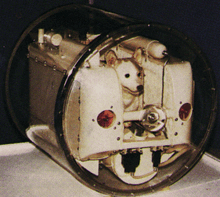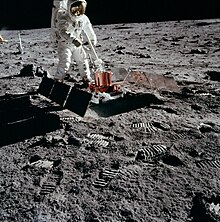Space exploration


Space exploration is a term which describes searching outer space. There are many reasons for space exploration. The most important reasons are for scientific research and the interest of humans to learn more about outer space. For centuries, humans had dreamt of reaching outer space. Rockets made it possible in the later 20th century. On October 4, 1957, the former Soviet Union launched the Sputnik 1, which was the first artificial satellite. This started the Space Race and people later went into orbit and Americans visited the Moon in Project Apollo.
Many space probes have gone to various planets and other places in the Solar System to send back information. When people first went to space they didn't know what the effects of microgravity would have on humans so they sent animals instead. But in 1961 the Soviets launched the first human into space, Yuri Gagarin. The journey to planets is hazardous enough so that probably humans will not be used, and machines can pick up samples. Some people think that Mars can be mined for minerals which are rare and valuable. There are no plans at present to send humans to Mars.
Astronomy[change | change source]
The first telescope was probably invented in 1608 by Hans Lippershey. The Orbiting Astronomical Observatory 2 was the first space telescope launched on December 7, 1968.[1] As of February 2, 2019, about 3,891 exoplanets are discovered. The Milky Way galaxy has more than 100–400 billion stars[2] and more than 100 billion planets.[3] There are about 2 trillion galaxies in the observable universe.[4][5]
Related pages[change | change source]
- Interstellar travel
- Moon landing
- Planet
- Solar system
- NASA
- ESA
- Russian Space Agency
- Astronaut
- Orion
- SpaceX
- Space Shuttle
- Soyuz
- Saturn V
- Exploration of Mars
- Exploration of Neptune
- Space
- Cosmos
- Universe
References[change | change source]
- ↑ Joseph A. Angelo (2014). Spacecraft for Astronomy. Infobase Publishing. p. 20. ISBN 978-1-4381-0896-4.
- ↑ "How Many Stars in the Milky Way?". NASA Blueshift. Archived from the original on January 25, 2016.
- ↑ Staff (January 2, 2013). "100 Billion Alien Planets Fill Our Milky Way Galaxy: Study". Space.com. Archived from the original on January 3, 2013. Retrieved January 3, 2013.
- ↑ Conselice, Christopher J.; et al. (2016). "The Evolution of Galaxy Number Density at z < 8 and Its Implications". The Astrophysical Journal. 830 (2): 83. arXiv:1607.03909v2. Bibcode:2016ApJ...830...83C. doi:10.3847/0004-637X/830/2/83. S2CID 17424588.
- ↑ Fountain, Henry (17 October 2016). "Two Trillion Galaxies, at the Very Least". New York Times. Retrieved 17 October 2016.
